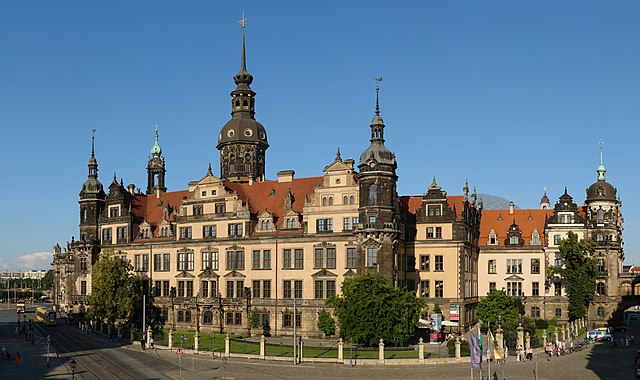The Fürstenzug in Dresden, Germany, is a large mural of a mounted procession of the rulers of Saxony. It was originally painted between 1871 and 1876 to celebrate the 800th anniversary of the Wettin Dynasty, Saxony's ruling family. In order to make the work weatherproof, it was replaced with approximately 23,000 Meissen porcelain tiles between 1904 and 1907. With a length of 102 metres (335 ft), it is known as the largest porcelain artwork in the world. The mural displays the ancestral portraits of the 35 margraves, electors, dukes and kings of the House of Wettin between 1127 and 1904.
The Fürstenzug on Augustusstraße
The Fürstenzug, starting with Margrave Conrad in the 12th century (left) to King George who ruled at the beginning of the 20th century (right)
Conrad, Margrave of Meissen, the first ruler in the procession
A girl in the children's group is the only female person in the Fürstenzug
Dresden Castle or Royal Palace is one of the oldest buildings in Dresden, Germany. For almost 400 years, it was the residence of the electors (1547–1806) and kings (1806–1918) of Saxony from the Albertine House of Wettin as well as Kings of Poland (1697–1763). It is known for the different architectural styles employed, from Baroque to Neo-renaissance.
Dresden Castle in 2008
The castle in 1550
The castle in 1896
Ruins of the castle, 1980








